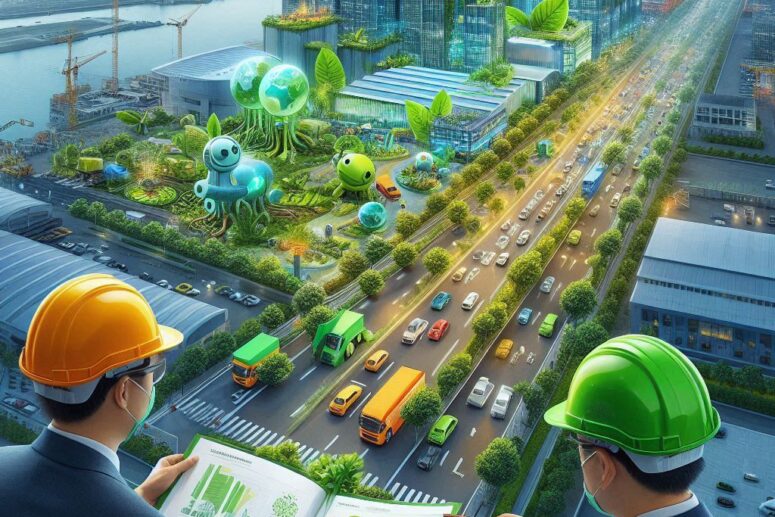
With 6.5 million cars and 74 million motorcycles, Vietnam is the second-largest emitter of greenhouse gases (GHGs) from road transport in Southeast Asia, following Indonesia. Emissions from road vehicles in the country are rising rapidly, with an average annual increase of about 15 per cent over the past decade.
- In contrast, global trends are increasingly focused on curbing emissions by adopting alternative energy sources and enhancing internal combustion engine tech.
- Addressing GHG emissions in the automotive industry involves focusing on two key energy sources: batteries and hydrogel. While recent studies on hydrogel have demonstrated promising initial results, its widespread adoption as an energy source remains challenging due to significant hurdles in storage and transportation.
- Hydrogel is not only difficult to store and transport, but also comes with high costs and a substantial risk of fire and explosion. For example, a 40-foot container, typically capable of holding 40 tonnes of goods, could only carry 360kg of hydrogel, requiring a large, heavy steel tank for safe transport.
- Despite these obstacles, the global transportation industry continues to explore hydrogel, hoping it will emerge as a key clean fuel for the automotive sector in the future.
- Electric vehicles (EVs) are currently being developed rapidly and have a significant market share in the US, Europe, and China. The advantages of these vehicles include their lightweight design, suitability for both short and long-distance travel, and the ability to set up charging stations or mobile battery-swapping stations.
- However, the biggest drawback of this energy source is the environmental impact of disposing of used batteries, which can cause significant pollution. To address this, many countries are now researching technologies to produce electric vehicle batteries with a lifespan of 20-30 years. As a result, EVs are seen as a highly promising solution for reducing GHG emissions in the coming decades.
- Vietnam is the world’s second-largest holder of rare earth reserves, representing around 19 per cent of global supply, comparable to Brazil and half of China’s reserves. This positions Vietnam as a key player in automotive battery production, contingent upon substantial investments in technology for the extraction and refinement of these critical elements. Therefore, Vietnam is well-positioned to capitalise on its significant market potential for EVs and motorcycles, backed by a plentiful supply of materials for manufacturing high-durability batteries.
- However, both government and industry must implement comprehensive, long-term strategies to cut GHG emissions while fostering a strong machinery and manufacturing sector that supports transportation, logistics, and defence needs.
- To overcome the challenges in advancing the automotive industry, it is essential to implement effective solutions that demand coordinated efforts from both the private sector and government. Firstly, in the development of the automotive industry, certain countries rely on robust banking systems capable of financing heavy industry, or the government provides loan guarantees to support enterprises in advancing the sector.
- Secondly, the full liberalisation of the automotive market presents a substantial challenge for the domestic automotive sector. Although this reflects the demands of globalisation, lessons from other countries show that targeted government policies can alleviate competitive pressures.
- Such measures might include subsidies related to land costs, requirements for public procurement to favour domestically produced EVs, or incentives for consumers to choose local EVs and products from domestic industries. South Korea exemplifies this approach, having successfully fostered a culture of supporting local businesses across multiple sectors, including automotive.
- Thirdly, developing public transportation systems that run on low-emission fuels or electricity, as seen in Thailand and other countries that use natural gas or liquefied petroleum gas, is a viable strategy. The government can subsidise fare prices to encourage consumer adoption of these modes of transport.
- Furthermore, additional supportive policies could include special consumption taxes, VAT adjustments, toll fees, and the development of infrastructure for electric vehicle charging stations. Such measures would facilitate the establishment of charging points in accessible locations at reduced costs, thereby aiding electric vehicle companies in minimising expenses related to charging infrastructure, maintenance, and battery repairs.
- Deploying vehicles designed to cut GHG emissions contributes to environmental preservation by reducing carbon particulate matter and noise pollution. Nevertheless, the required investment for this sector is significant. To complement the efforts of businesses operating in a competitive landscape, strategic government support is crucial. This includes fostering the development of both the automotive and dual-use machinery industries, which will benefit both consumer markets and defence sectors.
- Simultaneously, this initiative seeks to cultivate a highly skilled engineering workforce for both the industrial and defence sectors, focusing on areas critical to advancing technology and national security. For example, fields such as robotics and AI are built upon a robust mechanical technology base, requiring a cadre of proficient engineers capable of innovating, researching, and advancing technology tailored to Vietnam’s needs.
Source: Vietnam Investment Review
